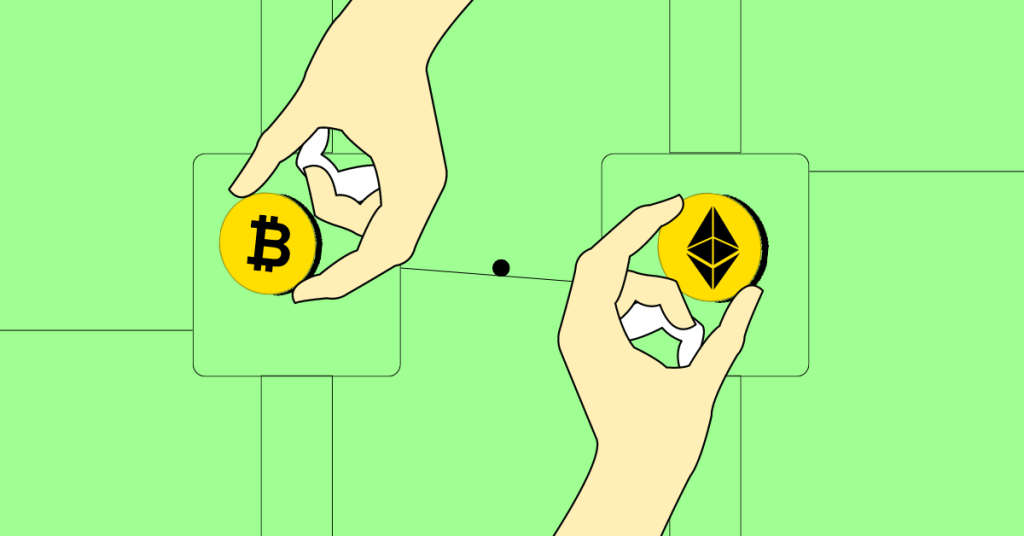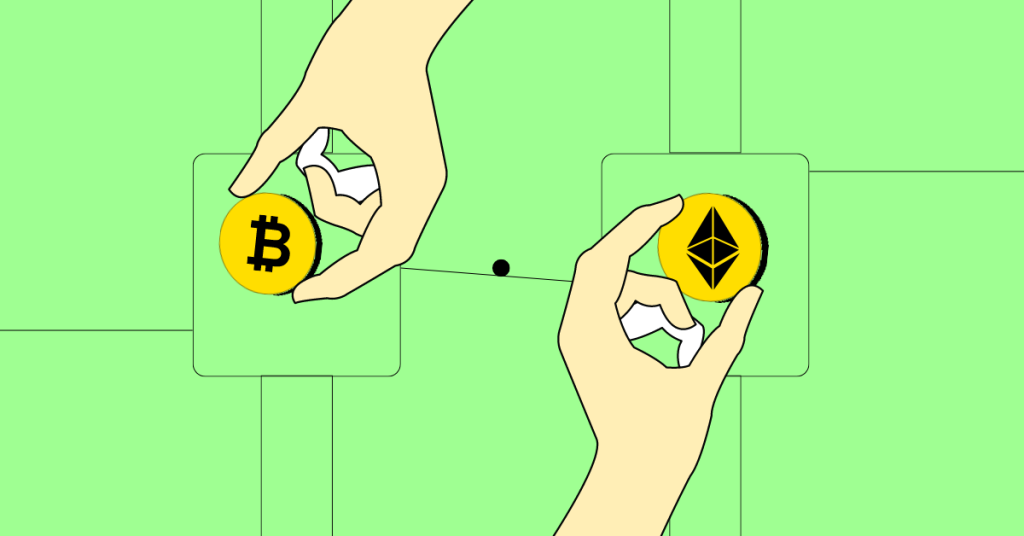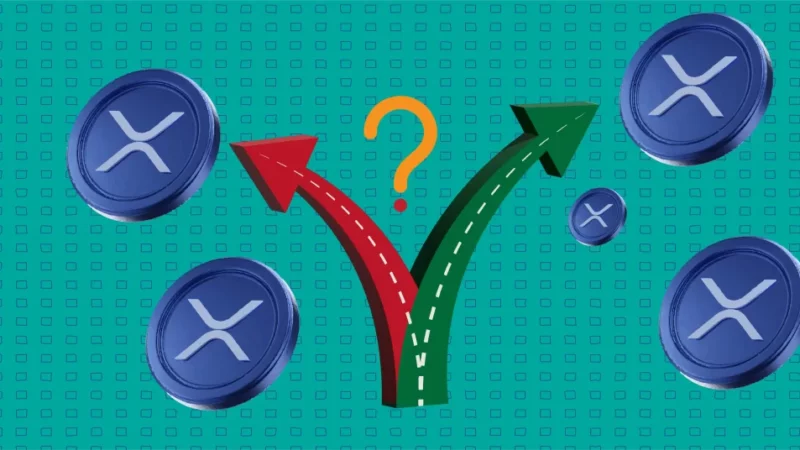Developing a Cryptocurrency: Design and Implementation


The post Developing a Cryptocurrency: Design and Implementation appeared first on Coinpedia Fintech News
Introduction
Cryptocurrencies have come a long way from just being a wild idea shared by some tech enthusiasts. They are making waves across the globe and compelling us to change the way we think about money, ownership, and trust. This evolution began with Bitcoin and now has grown much larger adding more currencies like Ethereum, Tether, BNB, and many more.
Cryptocurrencies represent a transformative shift in how we perceive and manage money. This transition is not just about trading or investing in the new currencies but beyond that. This has changed the way financial systems work fundamentally. Businesses are gaining interest in this field due to which creating new cryptocurrencies has become a keen area of research for entrepreneurs, innovators, and developers.
Why Create a Cryptocurrency?
Creating cryptocurrency isn’t just about writing a code and hoping that it works. It is more about crafting a solution that is more secure, effective, and engaging, something that people will see and want to use. A cultivated cryptocurrency doesn’t just justify its code but also sustains the market and grabs a spot in users’ minds forever. To achieve this kind of success for your currency you need to understand the bigger picture rather than just being proficient in technical skills.
Understand the power of Cryptocurrency
Imagine being able to create your own digital currency, that could potentially change the way people think about money and finance. Isn’t it fascinating? This gives you a chance to innovate and create a digital currency that has a real impact on the entire community and be part of something truly transformative.
Here’s What You’ll Discover
This article will guide you through the essential steps of designing a cryptocurrency, starting from the conceptual phase, where you define the purpose, audience, and unique value proposition of your currency.
Let’s dive into the world of cryptocurrency creation, where technology meets innovation and you get the chance to shape the future of finance. Ready to begin? Let’s get started!
Step-By-Step Guide:
1. Conceptualization
To create a successful cryptocurrency one must consider all the aspects from the underlying design, technology, market needs, and implementation strategies.
This step is the beginning of the idealization of the currency, and it has research-based parameters to make the currency successful. But before diving into coding, it’s crucial to clarify the purpose of the cryptocurrency you develop.
Define the Purpose
Objective: Think about a problem that interests you!
What unique value could your cryptocurrency provide to solve it? Start by identifying the market gap or a specific problem that your cryptocurrency will address. Write down your idea and consider how it could be implemented.
Define the clear purpose. For example, If you are creating a cryptocurrency for a peer-to-peer marketplace then the focus should be on ensuring the efficiency of the transactions.
Identify the problem:
Determine the Unique value proposition: Consider the elements on the basis that you can classify your cryptocurrency differently from others. It can be a unique feature, a better security mechanism, or a newer use case.
Example: If you’re creating a cryptocurrency for a decentralized marketplace, your goal might be to facilitate transactions efficiently and securely.
Market Research
Target Audience: Determine who will use your cryptocurrency and why. Pick if your cryptocurrency should run on a public blockchain that’s open to all or a private one that’s not. Like, Bitcoin runs on a public one, but you use Hyperledger Fabric for the private kind.
So let’s say you’re making a cryptocurrency for this secret finance company. Would you go with the public or the private blockchain? What’s your reason?
Competitive Analysis: Understanding the competitive landscape is crucial for positioning your cryptocurrency effectively. By studying existing cryptocurrencies, you can identify their strengths and weaknesses and determine how your cryptocurrency can stand out.
Key factors to consider:
- Competitive landscape and Market strategies
- Differentiation and integration of unique features
Example: Research existing cryptocurrencies in the decentralized marketplace space like Ethereum and its ERC-20 tokens that are designed specifically for DeFi.
2. Design Phase
Choose the Blockchain Type
Public vs. Private: Decide whether your cryptocurrency will operate on a public blockchain (accessible to everyone) or a private blockchain (restricted access).
- Public Blockchain: the best way for all crypto because of open, transparent, and independent.
- Private Blockchain: This is ideal for enterprises or institutions where control, privacy, and compliance are top priorities.
Example: Bitcoin operates on a public blockchain, while Hyperledger Fabric is used for private blockchains.
To learn more about the types and architecture of Blockchain, check this out! Public vs Private Blockchain. This could help you decide which way to go in the design phase.
Select the Consensus Mechanism
This is an important step in the design of blockchain systems since consensus mechanisms determine how transactions are verified and added to their global state. Which consensus mechanism you opt for also affects the security, scalability, and energy efficiency of your cryptocurrency.
One must be wondering, what are consensus Mechanisms exactly?
Consensus Mechanisms are a set of protocols that the participating nodes(computers) in the distributed ledger of blockchain need to agree upon, after which the validation of transactions and creation of blocks takes place.
Types of Consensus Mechanism:
Proof of Work (PoW): Miners solve difficult math problems to determine which will add the next block onto the blockchain
Working Principle:
- Miners/Participants need to compete to solve the cryptographic problem
- The first one to solve gets to publish the solution to the network
- The other nodes then verify the solution and validate it.
- The miner is rewarded with the cryptocurrency and a new block is added finally.
Example: PoW by Bitcoin is very secure but drains a lot of energy and unfortunately also less scalable.
Proof of Stake (PoS): Validators are selected to produce new blocks according to their applicable share of the network stake (#tokens held). Ethereum 2.0 uses PoS — which is more energy-efficient and scalable than ACG-based (PoW), e.g., mining nodes on Bitcoin blockchains’.
Working Principle:
- Validators are chosen on the stake they are willing to offer
- Validators propose the new blocks
- When a sufficient number of validators agree the consensus is achieved.
Example: Then PoS is a better idea than PoW, in case you are prioritizing scale-out of an energy-efficient system. For example, Ethereum 2.0 moved from PoW to PoS to solve the problem of scalability and environmental issues.
There are more types of consensus and a detailed description is provided in this article. Consensus Mechanism
Design the Tokenomics
This includes the way your cryptocurrency is governed, its total circulating supply as well as any incentives it brings to participants. Tokenomics tells you about the economic model your cryptocurrency will have, which includes its supply and distribution along with the incentives.
Types of Models:
Supply Model: The supply model of the crypto deals with how the total number of coins would be managed with time.
- Fixed Supply: The total number of tokens is capped (e.g., Bitcoin’s 21 million coins).
- Inflationary Supply: New tokens are continuously created over time.
- Deflationary Supply: Tokens are gradually removed from circulation, increasing scarcity.
The supply model impacts scarcity and supply, Dilution and inflation as well as the overall economic model.
Distribution Model: The distribution model decides the initial allocation and further user distribution of the coins.
- Initial Coin Offering (ICO): Early investors purchase tokens before the cryptocurrency is launched.
- Airdrops: Free distribution of tokens to encourage adoption.
- Mining/Staking Rewards: Tokens are distributed as rewards for validating transactions (PoW) or staking (PoS).
The Distribution model impacts the early investments, access, and initial distribution.
Example: Bitcoin has a fixed supply of 21 million coins, creating a sense of scarcity that can drive value. Alternatively, some cryptocurrencies use an inflationary model where new tokens are created over time to reward validators and maintain network security.
3. Development Phase
As you dive into cryptocurrencies, you need to decide if you’re gonna whip up a fresh blockchain or just craft a token using an existing one. Both ways have their perks and hurdles. This section serves up the essential steps for both paths dishing out a guide for blockchain whizzes.
Create the Blockchain or Token
Depending on your requirements, you can either choose to create a new blockchain or go with creating a token on the existing blockchain.
For a New Blockchain:
- Set Up Nodes: Setting up the nodes is the first thing you need to do as you set up a new blockchain.As we know nodes are computers that participate in blockchain networks and are responsible for validating and maintaining transactions. While you set up the nodes decide the type of node you want to go for and then deploy the node by considering all the power and storage factors.
- Develop the Protocol: Code the rules and mechanics of your blockchain. Decide the consensus mechanism that you want to implement also decide what the transaction model and smart contract functionality if any.
- Test the Network: Before launching your blockchain on the main network let it go through extensive testing. Deploy the test nodes have stress testing and implement the bug fixes and optimization. Use testnets to ensure everything works correctly before launching on the main network.
Example: Building a new blockchain from scratch might involve using C++ (like Bitcoin) or Rust (like Polkadot).
For a Token on an Existing Blockchain:
For projects that don’t essentially need a new blockchain, we can create a token on top of the existing blockchain which is more efficient and pocket-friendly.
1. Choose a Platform: Select the appropriate blockchain platform according to your requirements
- Ethereum: Ethereum is the most popular choice and is used till now in ERC-20, and ERC-721.
- Binance smart Chain: Binance is also widely used as it has lower transaction fees and a higher processing rate used for BEP-20
- Other Platforms: Some other alternatives are Solana, Avalanche, or Polygon.
2. Develop the Smart Contract: Write the smart contract code for your token. This includes specifying the token’s name, symbol, total supply, and how it can be transferred.
Developing the smart contract includes the steps as follows:
- Token Standards: Use and specify the token standards. Either use ERC-20 for fungible tokens or ERC-721 for nonfungible tokens.
- Coding the contract: Write the code for your smart contract and stick to the standards and coding practices that are advised.
- Security Features: Take care of common vulnerabilities like reentrancy attacks, integer overflows, and unauthorized access.
3. Deploy the Smart Contract: Deploy the smart contract to the chosen blockchain network. For deployment first carry out the test deployment on the deployment environments and once it is successful go for the mainnnet deployment.
Example: Create an ERC-20 token using Solidity on Ethereum with a contract that defines the token’s behavior.
Integrate with Wallets and Exchanges
Wallet Integration: Ensure that your cryptocurrency is compatible with popular cryptocurrency wallets.
- Popular Wallets: Work with popular wallets such as MetaMask, Trust Wallet, or Ledger based on the chosen platform.
- Custom Wallets: If your blockchain or token needs unique features, think about making a custom wallet.
Exchange Listings: Get your cryptocurrency listed on exchanges for trading. Listing your cryptocurrency on exchanges is vital because it allows for liquidity and trading.
- Decentralized Exchanges (DEXs): For tokens on established blockchains, getting listed on DEXs like Uniswap (Ethereum) or PancakeSwap (Binance Smart Chain) is the initial move.
- Centralized Exchanges (CEXs): Target listings on CEXs such as Binance, Coinbase, or Kraken to gain more visibility and liquidity.
Example: For an ERC-20 token, integration with MetaMask and listing on decentralized exchanges like Uniswap would be key steps.
4. Security and Testing
Security is the heart and soul of blockchain technology. When you’re developing a digital currency, there’s simply no room for shortcuts when it comes to protecting your system. Every step of the way—whether you’re designing the blockchain, writing code, or planning the launch—security has to be your top priority.
Conduct Security Audits
Think of it as building a fortress around your currency. If there’s even a small crack in the walls, everything inside is at risk. That’s why, from day one, you need to be thinking about how to safeguard your currency from potential threats. Missing this step isn’t just risky—it’s unthinkable. It’s what keeps your users’ trust intact and ensures that your currency can thrive in the wild world of digital finance.
Hence, Auditing the code before deployment is the biggest and most important step.
- Code Review: Have your code reviewed by experts to identify and fix vulnerabilities by professionals. Perform the penetration testing and simulate various attacks to identify potential vulnerabilities.
- Testing: Perform rigorous testing to ensure the security and functionality of your cryptocurrency. Go for the all-round testing including the Unit testing for individual components. Then Integration testing to verify all different parts and their unison. Simulate high traffic and transaction volumes to ensure your system can handle real-world conditions.
Example: Conduct audits through firms like ConsenSys Diligence or Trail of Bits.
5. Launch and Post-Launch
When you’ve finished developing and securing your digital currency, the next big step is the launch. This is where all your hard work, sleepless nights, and meticulous planning come together. The launch is more than just flipping a switch—it’s the moment your vision becomes a reality and your currency steps into the world.
Remember, a strong launch sets the tone for everything that follows. By combining technical excellence with a thoughtful, user-centered approach, you’re not just launching a currency—you’re launching a movement.
Launch the Cryptocurrency
- Mainnet Deployment: You get your blockchain or token out on the main network for everyone to see.
- Marketing and Adoption: You need to hype up your crypto to draw in users, money-givers, and code creators. To get buzz, work the crowd with social media, and news blasts, and get friendly with the community.
- Example: Announce your launch through press releases, social media, and community engagement. To tell the world about your crypto coming-out party, toss out some newsy bits hashtag heavy social media blitzes, and interact with the users on sites like Reddit and Twitter.
Ongoing Maintenance
- Monitor Performance: Always keep a check on the performance of your crypto and how tight it’s security is. Fix problems as soon as they arise.
- Update and Improve: Listen to what users are saying and watch for new tech. Then drop updates to make your crypto work better and safer, and give users a nicer time using it.
Example: Regularly update your token’s smart contract and address any security issues that arise. Stay on top of your crypto game by sprucing up your token’s smart contract. Squash those pesky bugs, give the features a boost, and slam the door on security threats to make sure your crypto stays winning
Conclusion
Creating digital currency demands knowing the big ideas and techy bits, like figuring out why you’re making it doing your homework on buyers, building the blockchain, keeping it safe, and handling the big release. It starts with a solid grasp of blockchain technology, moves through careful planning and design, and requires a strong focus on security to keep everything safe.
But that’s not all. You also need to think about how your currency will be used, how to build trust with your users, and how to make sure it can grow over time. The launch is just the beginning; the real challenge is maintaining and improving your currency as the market evolves. By combining tech skills with creativity and strategic thinking, you can create a digital currency that not only works well but also captures people’s imagination and stands the test of time.
Keep learning and Happy Coding!!
Also Check Out: Cryptography 101: The Key to Blockchain Development for Beginners

